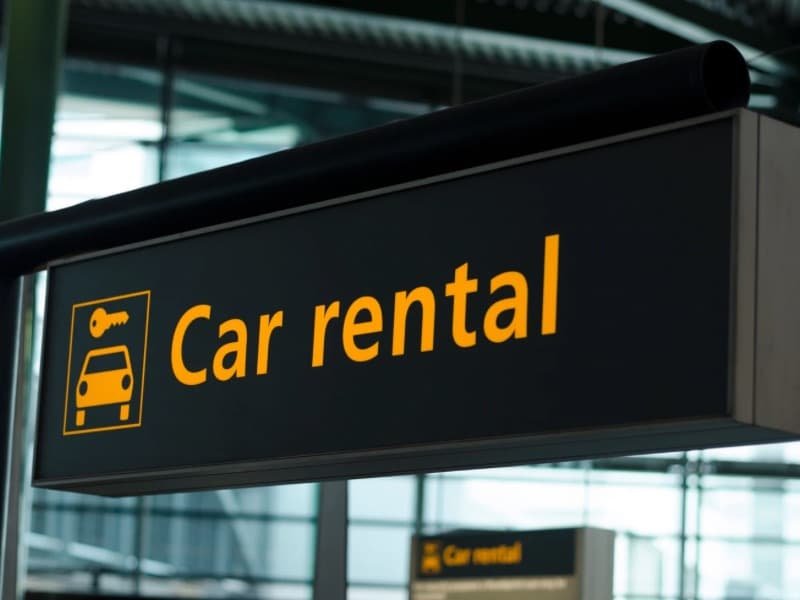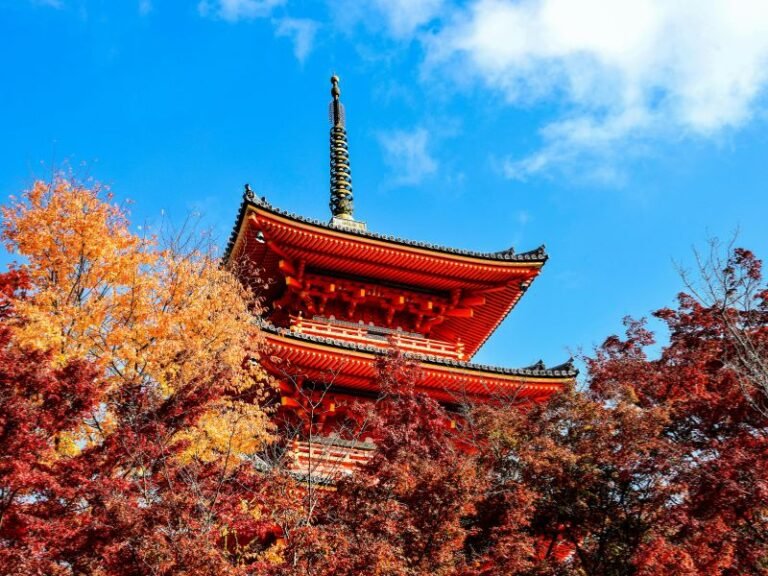How to rent a car in Japan : The Complete Guide for American Travelers
Are you wondering how to rent a car in Japan?
Japan’s transportation system is incredibly convenient – with efficient trains, buses, and taxis, you really don’t have to worry about how to get around during your visit. However, if you can drive a car in Japan, you’ll have the freedom to explore interesting places off the beaten path that might otherwise be inaccessible.
As someone who has experienced driving in both countries, I don’t generally recommend driving in Japan for first-time visitors. The most obvious challenge is that in Japan, we drive on the left side of the road, while Americans drive on the right. This means the steering wheel position is also opposite. When I started living in the USA, I struggled to get used to driving on the right side. Now that I’m comfortable with it, I actually find driving on the left side in Japan scary and hesitant when I go back!
Having rented many cars in the USA and Europe (I used to live in the UK), I can confidently say that America’s rental car system is the best. It’s well-organized, and in many cases, you can choose exactly which car you want to drive – something truly amazing. In Japan, the rental process is different – you typically can’t choose your specific car, just the class of vehicle. The Japanese rental car system isn’t particularly exciting compared to the US. However, you can count on getting a well-maintained vehicle with no safety concerns. It’s just not as customer-focused or flexible as what Americans may be used to. Before you plan your trip to Japan, I want to share what the driving rules and rental car system are really like. My hope is that this blog post will help you decide whether driving in Japan is right for your travel plans!
Qualifications for Driving in Japan as an American
Unlike many countries, where your US driver’s license is sufficient, Japan requires American drivers to have an International Driving Permit (IDP) in addition to their valid US driver’s license.
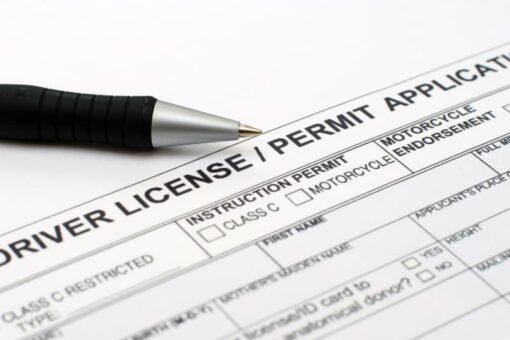
International Driving Permit (IDP) Requirements:
- You must obtain your IDP before leaving the United States
- Available through AAA
- Valid for one year from the date of issue
- Cannot be obtained once you’re already in Japan
Without an IDP, you won’t be able to rent a car in Japan, so this is an essential step in your preparation. If you’re planning to stay in Japan for more than a year, you’ll need to convert to a Japanese driver’s license, which is a more involved process.
For detailed info of Japanese driver’s license, see the National Police Agency HP.
Japanese Driving Rules
Perhaps the most significant adjustment for American drivers is that Japanese traffic drives on the left side of the road, similar to the UK and Australia but opposite to the US.
Adjusting to Left-Side Driving:
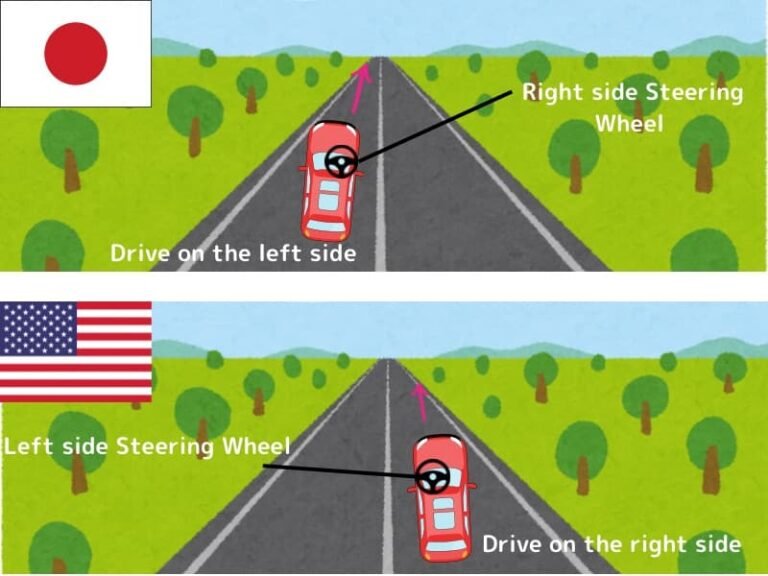
- It may feel unnatural at first, especially at intersections
- The driver’s seat is on the right side of the vehicle
- Practice in less congested areas before tackling busy city streets
- Remember: the driver should always be positioned toward the center of the road (Try focus on this!)
- No left turn on red: Unlike in the US where right turns on red are generally permitted, in Japan you cannot turn left when facing a red light. You must wait for the green signal regardless of traffic conditions
Control Differences
- The turn signal and wiper controls are often reversed from US cars (Turn signal is right in Japan)
- The pedal arrangement remains the same (accelerator on right, brake in middle)
- Most rental cars are automatic transmission, though manual is available
Railroad Crossing Rules

- Mandatory full stop at all railroad crossings: In Japan, drivers must come to a complete stop before every railroad crossing, even if the warning lights aren’t flashing and no train is approaching
- This differs from the US, where you typically only need to stop if signals are active or a train is visible
- Failure to stop completely can result in a traffic violation and fine
Right of Way
In Japan, the right-of-way rules are similar to the US, but enforcement and adherence to these rules tend to be stricter. Drivers are expected to yield to pedestrians at crosswalks consistently.
Road Regulations
Speed Limits
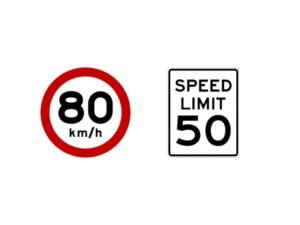
Speed limits in Japan are noticeably lower than in the US:
- Ordinary roads in urban areas: 30-40 km/h (19-25 mph)
- Ordinary roads outside urban areas: 50-60 km/h (31-37 mph)
- Expressways: 80-100 km/h (50-62 mph)
Compare this to typical US limits of 25-45 mph in cities and up to 70-80 mph on highways. The pace of driving is generally more moderate in Japan. You might feel very slow like me but please be patient. Japan’s road is narrow and not separated from pedestrians (except highways). So this speed limits is reasonable. Of cause too slow speed may cause congestion. Drive in the same level as other drivers.
Alcohol Regulations
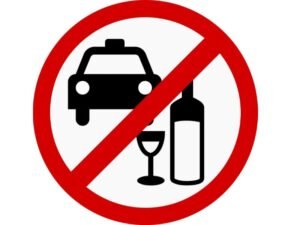
Japan has a zero-tolerance policy for drinking and driving, which is much stricter than US BAC limits (typically 0.08%). Even a single drink can put you over the legal limit in Japan, and penalties are severe, including:
- Heavy fines (up to several thousand dollars)
- Possible imprisonment
- Immediate license revocation
- Liability for passengers who knowingly ride with an intoxicated driver
You can drink by the limit in the USA, but please do not drink when you drive in Japan. We are not allowed to drink even one drop. Drinking drive cause severe accidents.
We have a Japanese word, like slogan, “Nondara Noruna(飲んだら乗るな)” meaning Don’t drink and drive.
Seatbelt Requirements
All passengers are required by law to wear seatbelts, and children under 6 years old must be in appropriate child seats. You can rent a child seat at the rental car shop.
Highway System and ETC
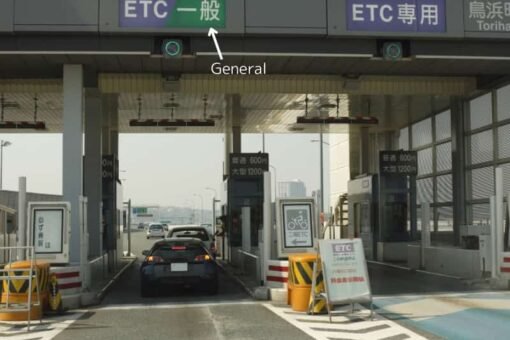
Japan’s expressway network is extensive and well-maintained, though tolls can be quite expensive compared to the US! You may be surprised.
Electronic Toll Collection (ETC) System
- Unlike the various toll systems in the US, Japan has a unified ETC system
- When entering and exiting highways, you have two payment options:
- ETC gates: For drivers with ETC cards (you can proceed through at reduced speed)
- General gates: For cash payment (you must come to a complete stop)
- Japan doesn’t use license plate recognition systems like some US toll roads
- Using ETC offers several advantages:
- Slightly cheaper toll rates compared to cash payment
- Special discounts (such as late-night discounts in some areas)
- Significant time savings at toll booths
- No need to handle cash or wait for change
How to Use the ETC System
- Most rental cars come equipped with an ETC card reader installed
- Request an ETC card from your rental company (usually costs ¥300-500 per day)
- Simply insert the card into the reader at the beginning of your journey
- When you pass through ETC gates, slow down but you don’t need to stop
- Tolls are automatically charged to your rental agreement
- Despite the additional fee for the card, it’s definitely worth it for the convenience
Cost Considerations
A journey from Tokyo to Kyoto by expressway can cost approximately ¥10,000 ($70-90) in tolls each way. This is significantly more expensive than most US toll roads for comparable distances. Using the ETC card can save you around 5-10% on these costs, plus time and hassle.
Gas Stations in Japan

Self-Service vs. Full-Service
While self-service gas stations have become common in Japan, full-service stations are still widespread – unlike in the US where they’ve become rare. At full-service stations, attendants will:
- Pump your gas
- Clean your windows and mirrors
- Collect payment
- Often check tire pressure and fluid levels
Full-service stations typically charge slightly more (¥2-5 per liter) than self-service options.
Operating Hours
Unlike 24/7 gas stations common in the US, many Japanese gas stations operate from around 7 AM to 8 or 9 PM, with reduced hours on Sundays and holidays. Plan accordingly, especially in rural areas.
GPS and Navigation
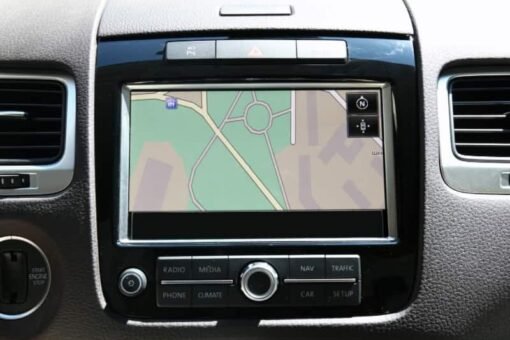
Navigation is one of the biggest challenges for foreign drivers in Japan due to the address system and language barriers. I personally recommend using Google Maps with downloaded offline maps.
Navigation Options
- Most rental cars come with built-in GPS systems
- Request an English-language GPS when reserving your car
- Even English GPS systems may struggle with English inputs for destinations
- Consider using Google Maps or other smartphone apps as backup
Address System Differences
Japan’s address system is very different from the US grid system. Instead of street names and numbers, addresses are based on areas, blocks, and building numbers that often aren’t sequential. This makes navigation challenging even with GPS.
Recommended Strategy
- Save your hotel’s phone number to call for directions if needed
- Screenshot maps of your destinations before setting out
- Use landmarks rather than addresses when possible
- Consider downloading offline maps through Google Maps
Seasonal Driving Considerations

Winter Driving
If you’re traveling to northern Japan (Hokkaido, Tohoku) or mountainous regions in winter:
- Snow tires are mandatory from November to March in many areas
- Rental companies will equip vehicles accordingly (may incur additional fees)
- Many mountain passes close completely during winter months
- Roads are well-maintained but can become hazardous quickly during snowstorms
Rainy Season
From early June to mid-July, Japan experiences its rainy season:
- Expect reduced visibility
- Allow extra braking distance
- Be aware of potential landslides in mountainous areas
- Turn on headlights even during daytime rain
Speed Cameras and Traffic Enforcement
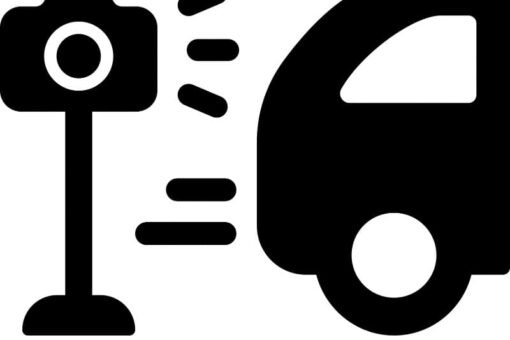
Japan employs extensive automated traffic enforcement more systematically than in most US regions.
Speed Camera Network
- Speed cameras are widespread and often unmarked
- Rental car companies will pass violation fees to you (plus handling charges)
- Fines range from ¥9,000 to ¥100,000 ($60-$700) depending on the violation
- The tolerance for speeding is much lower than in the US
Red Light Cameras
These are also common at major intersections in cities. Running a red light carries significant penalties.
Unlike in the US, where enforcement can vary greatly by region, Japan’s traffic laws are enforced consistently throughout the country.
Car Ferries

While not part of most tourist itineraries, car ferries can be useful for certain routes, particularly between major islands.
Major Routes
- Honshu to Hokkaido
- Honshu to Shikoku
- Honshu to Kyushu
- Various connections to smaller islands
Process and Costs
- Advance reservations recommended, especially during holiday periods
- Costs depend on car size, distance, and accommodation type
- For example, a standard car from Aomori to Hakodate (connecting Honshu and Hokkaido) costs approximately ¥8,000-15,000 ($55-$105)
- Additional passenger fees apply
Car ferries in Japan typically offer more amenities than US counterparts, with many overnight routes featuring cabin accommodations, restaurants, and bathing facilities.
Rest Areas and “Michi-no-Eki”
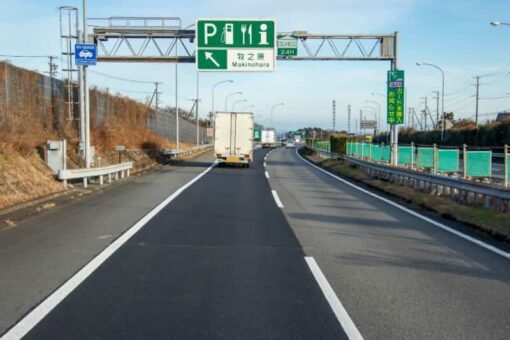
Japan’s highway rest stops put American ones to shame, offering a variety of services and often becoming destinations in themselves. Check my page :Rest Areas: USA vs. Japan – A Cultural Journey Along the Highway
Service Areas (SA) on Expressways
- Extensive food options (often featuring local specialties. You may find your favorite sweets!)
- Clean restrooms
- Souvenir shops
- Viewing decks in scenic areas
- Some include hotels, bathing facilities, or playgrounds
“Michi-no-Eki” 道の駅 (Road Stations)
This is a kind of rest area in general roads. Like Service area in highway, you can take a rest and enjoy local foods and souvenirs.
- Free parking and restrooms
- Local produce and crafts
- Tourist information
- Regional specialty foods
- Sometimes museums or hot springs
The quality and cleanliness of these facilities generally surpass typical US rest stops. They’re excellent places to experience local culture while taking a break from driving.
Parking in Japan

Types of Parking
- Automated Parking Towers: Common in cities, these mechanical systems stack cars vertically to save space
- Coin Parking Lots: Pay-by-time lots with automated gates
- Street Parking: Very limited and often prohibited
- Department Store Parking: Often validated with purchase
Costs and Considerations
- Hourly rates in cities like Tokyo range from ¥300-800 ($2-$6) per hour
- Many parking spaces are smaller than US spaces
- Larger vehicles (anything bigger than a compact) may incur additional fees
- Some parking lots are not open 24 hours
Payment Systems
- Take a ticket upon entry
- Pay at an automated machine before returning to your car
- Insert paid ticket at exit gate
Rental Car Systems in Japan

Reservation Process
- Book on line at least 2-3 weeks in advance for regular periods
- For peak seasons (Golden Week(From end of April to early May), Obon(Middle of August), Cherry Blossom season(April)), book 1-2 months ahead
Required Documents
- Valid US driver’s license
- International Driving Permit
- Passport
- Credit card in the renter’s name
Detailed Rental Procedures
Step 1: Arrival and Check-in
- Arrive at least 30-60 minutes before your scheduled pickup time
- Go to the rental counter and present your documents
- Fill out the rental agreement (usually available in English at major locations)
- Payment is typically required upfront, not at return like in the US
- You’ll be asked to select insurance options and add-ons (ETC card, child seats, etc.)
Step 2: Vehicle Inspection
- Staff will walk you to your vehicle
- Unlike in the US where you often choose your car, in Japan you’re assigned a specific vehicle
- Together with staff, you’ll inspect the car for existing damage
- Take photos of any scratches or dents for your own records (we usually do this, just in case)
- The inspection form will be in Japanese with diagrams – ask for explanation if needed
Step 3: Vehicle Orientation
- Staff will provide a thorough explanation of the vehicle controls
- They’ll show you how to operate the navigation system and set it to English if possible
- You’ll receive instructions on the type of fuel required
- Staff will explain toll road procedures and how to use the ETC card
- They may offer a brief explanation of basic Japanese road signs
Step 4: During Your Rental Period
- Keep all rental documents in the car
- Japan has strict parking regulations – always use designated parking areas
- Save your gas receipts (some companies request these. We always do this even in the USA.)
- If you have any issues with the car, call the support number provided
Step 5: Return Process
- Fill the tank completely before returning (gas stations near rental locations often cost more)
- Allow 15-30 minutes for the return process
- Staff will inspect the vehicle again for any new damage
- Return all items provided (maps, ETC card, etc.)
- You’ll receive a final receipt detailing all charges
Cost Structure
- Daily rates range from ¥5,000-15,000 ($35-$105) depending on car size
- Additional fees for ETC cards, GPS, child seats, additional drivers
- Basic insurance is included but with high deductibles
- One-way rentals incur significant fees (¥5,000-30,000)
- Some companies charge a cleaning fee if the car is returned excessively dirty
Japanese Car Options
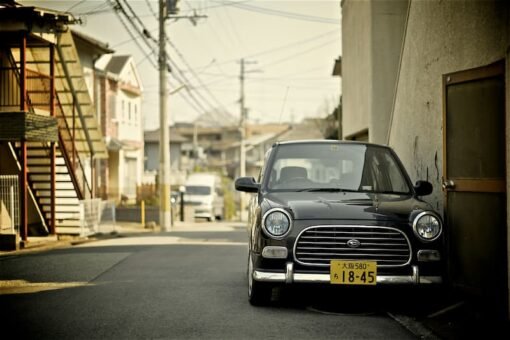
Vehicle Classes
- Kei Cars (軽自動車): Japan’s unique ultra-compact category with yellow plates (See picture above)
- Compact: Similar to US compact cars
- Medium: Equivalent to US mid-size sedans
- Wagon/Van: Popular for families or groups
What is Kei-Car?
These tiny vehicles are a distinctly Japanese category you won’t find in the US:
- Engine size limited to 660cc
- Physically smaller dimensions
- Excellent fuel economy
- Easier to park in tight spaces
- Lower expressway tolls and tax rates
- Perfect for narrow rural roads
While they may seem too small for American preferences, Kei cars are actually quite comfortable for 1-2 people and can handle Japanese roads better than larger vehicles. Power might be less than you expect. If you want a special drive memory in Japan, driving with Kei-car might be one of them. However, I don’t recommend this if you go to a mountain area because of the power. It is much better a compact car.
Transmission Types
Most rental cars in Japan have automatic transmissions, though manual options are available (specify when booking).
Essential Japanese Terms for Renting and Driving
Car Rental Vocabulary
- Rental car: レンタカー (rentakā)
- Driver’s license: 運転免許証 (unten menkyoshō)
- Insurance: 保険 (hoken)
- Reservation: 予約 (yoyaku)
- Full tank: 満タン(mantan)
Road Terminology
- Expressway: 高速道路 (kōsoku dōro)
- General road (the road except highway):一般道路(Ippan dōro)
- Toll gate: 料金所 (ryōkinjo)
- Parking: 駐車場 (chūshajō)
- Gas station: ガソリンスタンド (gasorin sutando)
Emergency Phrases
- I’m lost: 道に迷いました (michi ni mayoimashita)
- Call police: 警察を呼んでください (keisatsu o yonde kudasai)
- Car trouble: 車の調子が悪いです (kuruma no chōshi ga warui desu)
- Help me: 助けてください(Tasukete kudasai)
Conclusion
Driving in Japan offers a unique perspective on this beautiful country that you simply can’t get from trains or buses alone. While the rules and systems differ from what you’re used to in the US, with proper preparation, driving in Japan can be a safe, enjoyable, and rewarding experience.
The key differences to remember:
- Driving on the left side of the road
- Stricter adherence to traffic rules
- Lower speed limits
- More expensive tolls and parking
- Zero tolerance for alcohol
By understanding these differences and planning accordingly, you’ll be able to enjoy the freedom of exploring Japan’s countryside, remote attractions, and scenic drives that many tourists never get to experience.
Oh, please don’t forget your IDP! Safe travels and enjoy driving in Japan!
